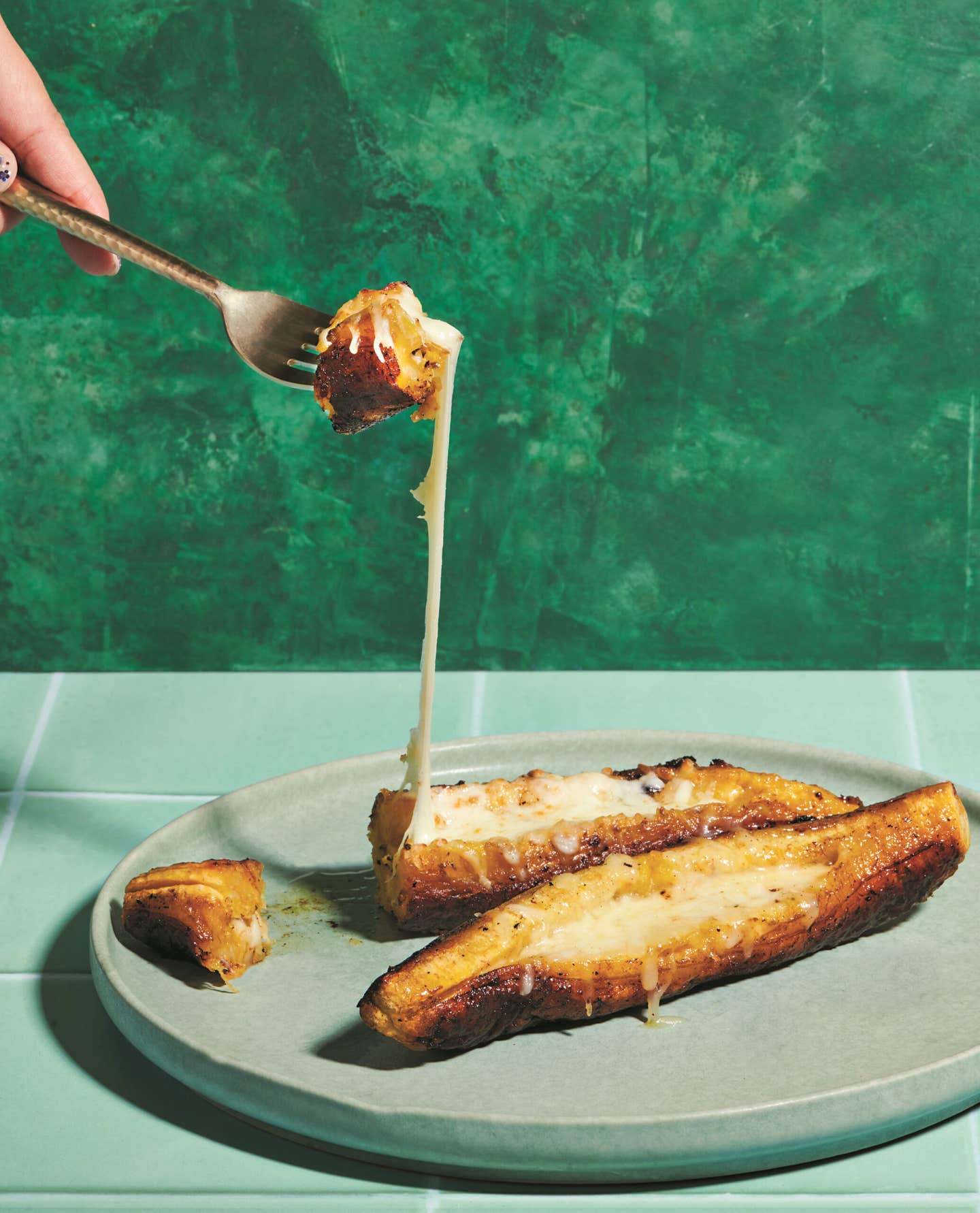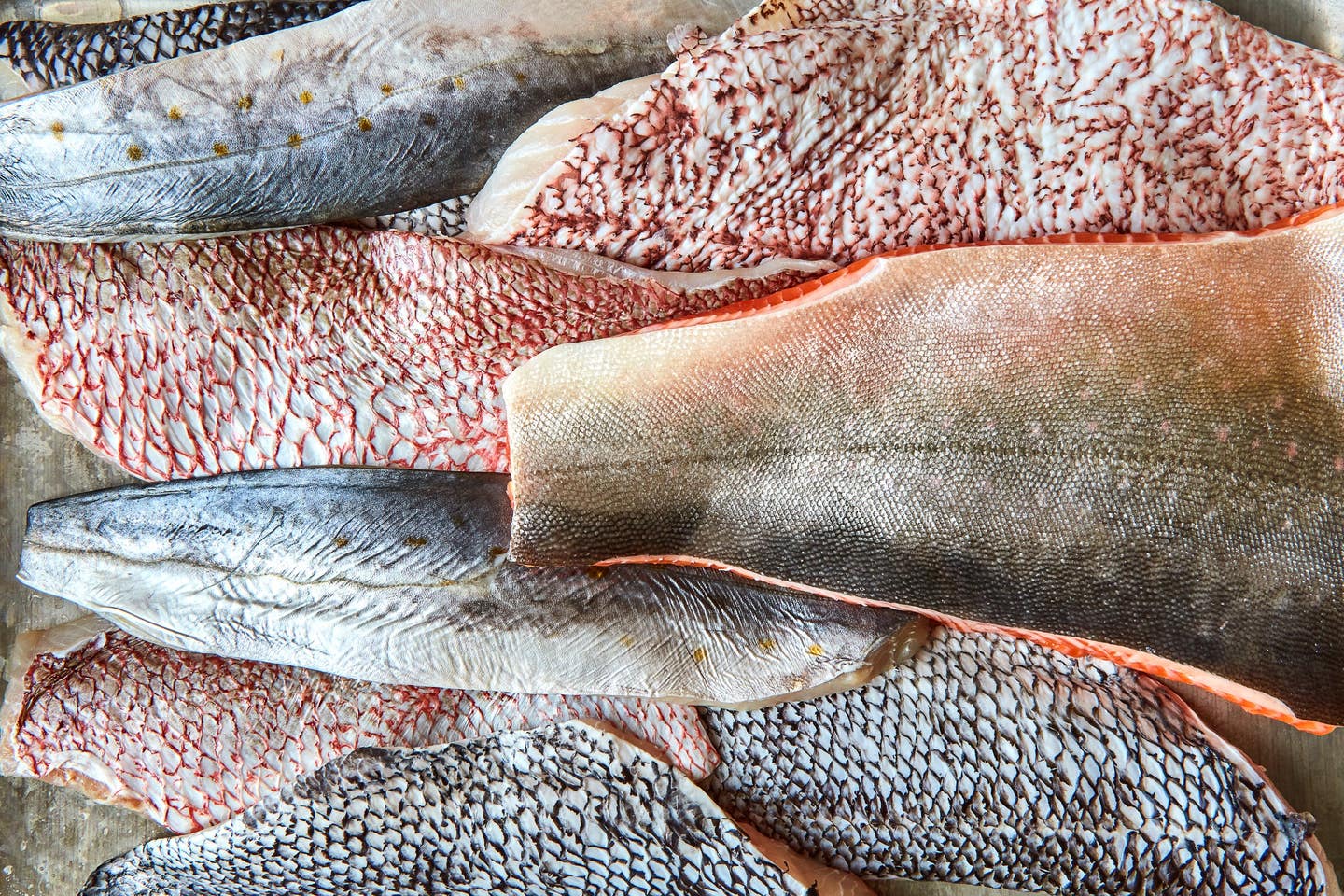
In Defense of Poaching Fish
Whether in butter, milk, or court-bouillon, this easy and oft-overlooked technique is more flavorful than you may think.
Put away the searing-hot pan and step away from the fiery grill. In writing my book, The Pacific Northwest Seafood Cookbook, I learned that most people, when handed a fish, tend to gravitate toward the same cooking methods they use to prepare meat. But learning how to poach fish gives you a simple, forgiving, and versatile way to prepare this leaner and far more delicate ingredient. Since the proper temperature of poaching liquid is only slightly warmer than the temperature of perfectly cooked fish, this method lessens the risk of overcooking. The technique also works well for just about any type of fish, from firm white varieties like cod and tilapia, to fattier fish like salmon, to crustaceans like shrimp and lobster. You can poach fish in a wide range of different liquids, and serve poached fish with all types of sauce—or with none at all.
What you need
- Pot or skillet large enough to fit the fish and tall enough for it to be submerged
- Instant read thermometer
- Fish spatula
- Fish fillets
- Liquid of your choice, such as broth, court-bouillon, oil, butter, milk
BEFORE YOU BEGIN
You can poach any type of fish in just about any type of liquid, but I recommend leaving whole fish for after you've mastered poaching fillets. You can use skin-on or -off fillets (but know that poaching tends to produce less-than-appetizing, somewhat slimy skin). Many poaching recipes suggest using a quick, light broth called court-bouillon, but I suggest starting with an even simpler liquid. Any moderately salted broth thinned with wine works nicely, as does salted milk. Oil- or butter-poaching works particularly well for lean fish such as halibut or albacore. (Pro tip: For incredible flavor, brown the butter; just be sure to bring it back down to poaching temperature before adding your fish.)
STEP 1: Heat your liquid to a gentle simmer.
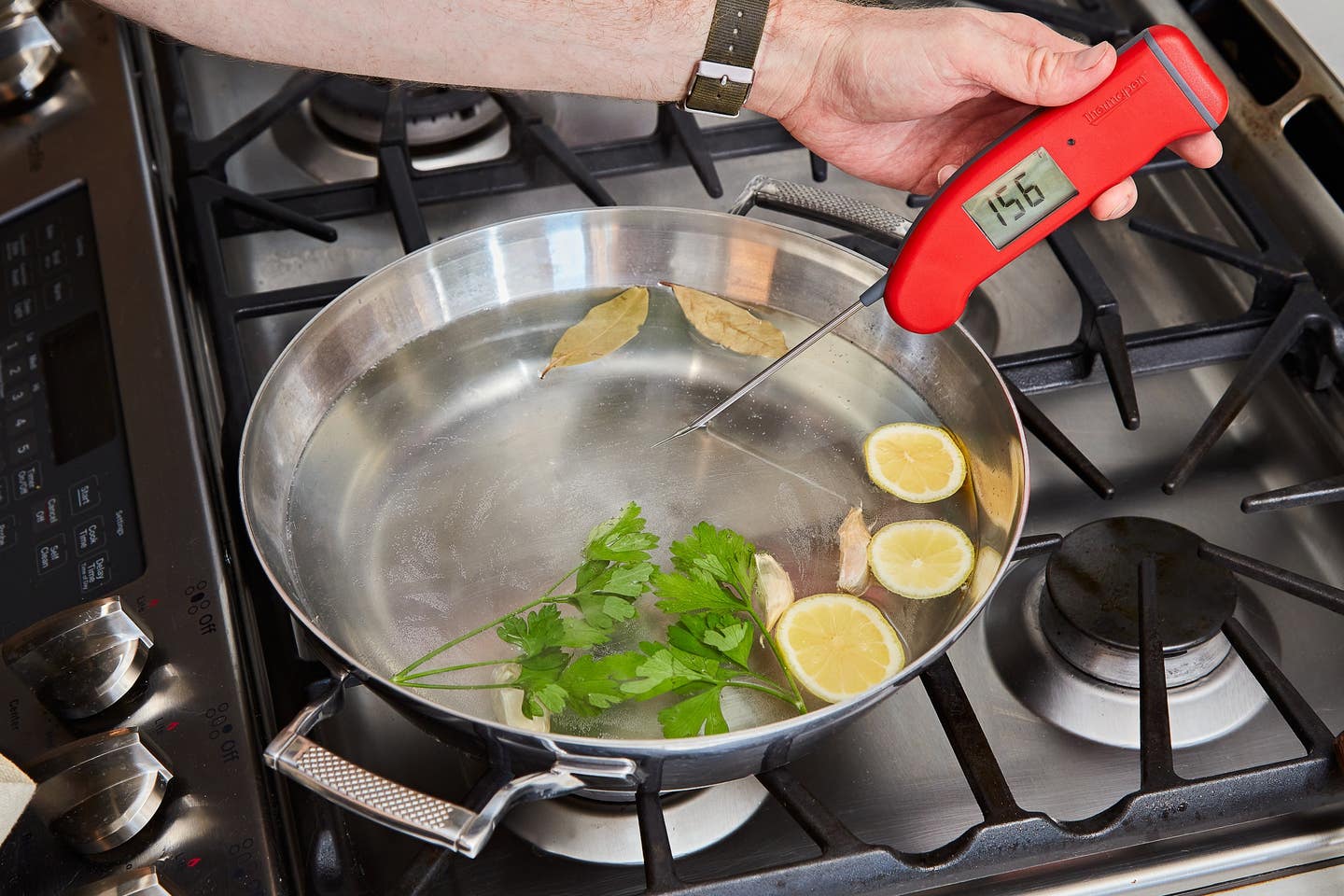
Pour enough liquid into a wide pot or deep skillet to just cover the fillets (if necessary, test this before you heat the liquid). Place the pan over medium heat until it comes to a simmer, then dial the heat back so the liquid maintains a little bit of movement but doesn't quite produce the bubbles that indicate simmering. Oil and butter produce fewer bubbles than water and water-based liquids, so you’ll need to use an instant-read thermometer to check the temperature of those fat-based poaching liquids. You’re going for 140 to 160 degrees Fahrenheit. Don't worry too much about maintaining an exact temperature, as that level of precision is difficult on most stoves.
STEP 2: Slide fish gently into liquid and let it cook.
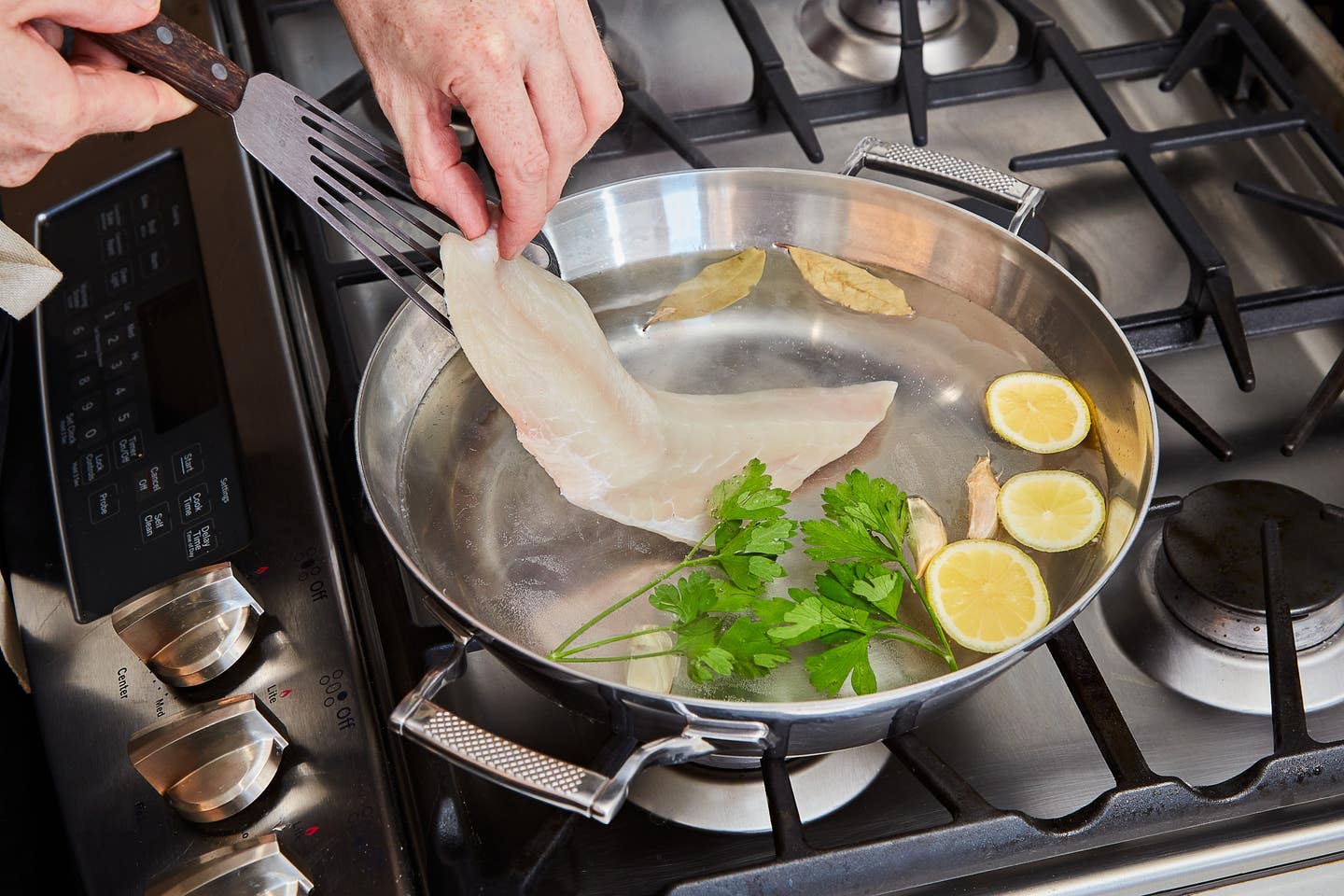
Place the fillet on the fish spatula and slide it gently into the liquid. Repeat with as many fillets as needed without crowding the pan. The more fillets you cook at once, the longer they will take to cook, as the poaching liquid will take longer to return to poaching temperature. Keep an eye on the liquid as it cooks, moderating the heat to make sure it does not rise above 160 degrees Fahrenheit. (But again, this is a forgiving method: if the liquid starts to bubble, your fish will be fine; just turn down the heat).
STEP 3: When cooked, remove fish from the pan.
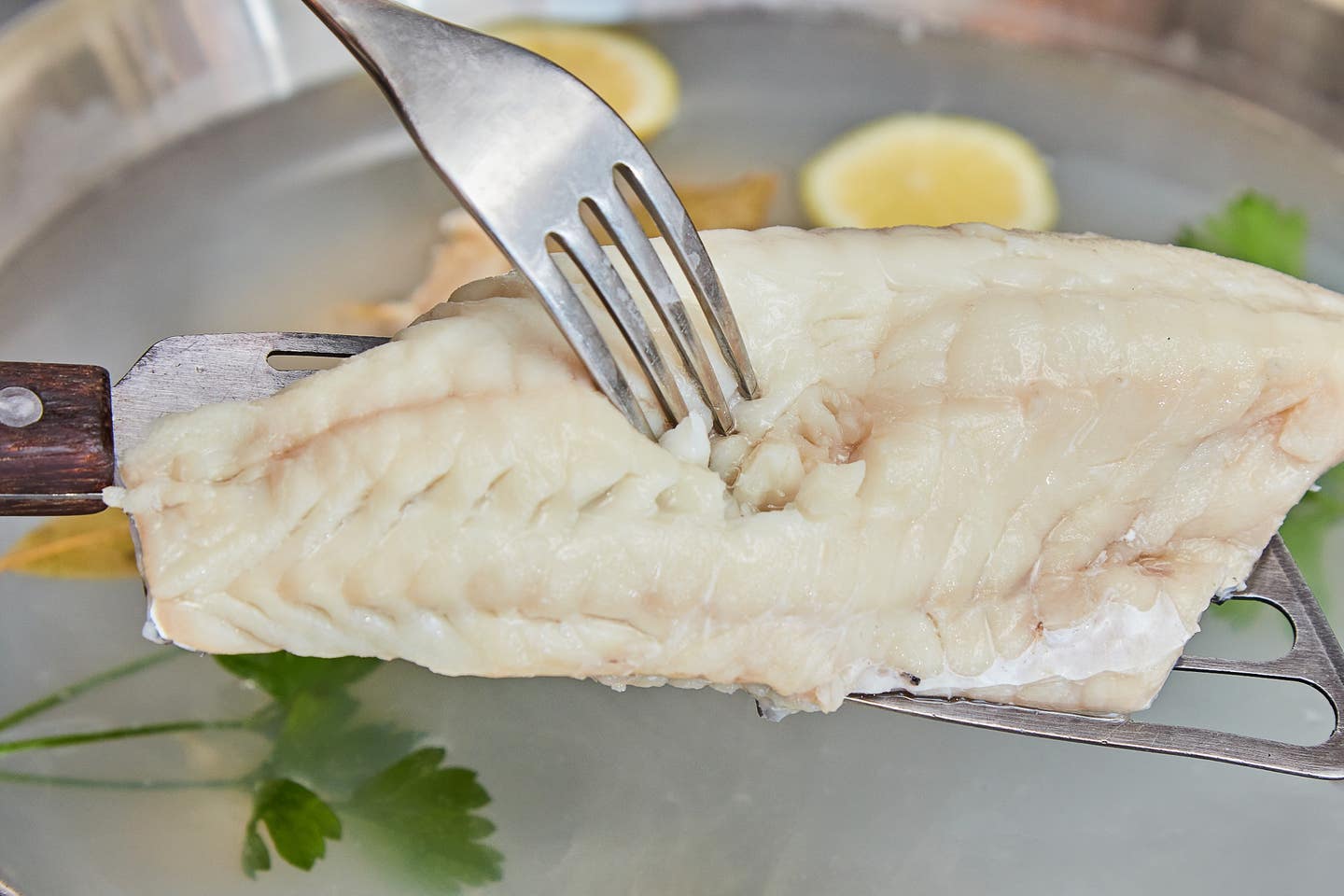
How long it takes to cook the fish depends on the temperature of liquid and thickness and type of fish. For an inch-thick cod fillet in broth, figure about 7 minutes. For a thick tuna steak in butter, maybe closer to 10. If you nudge the fillet with a utensil, the flesh should be very soft and just beginning to flake apart. For super-thin fish, you can pull it from the liquid once the flesh turns opaque. But the best way to know is using your instant-read thermometer. Most fish are cooked to a medium doneness at around 135 degrees Fahrenheit (a little earlier for tuna or shrimp). Remember that your liquid is not much hotter than that, so the fish is unlikely to overcook—that's the magic of poaching! Using your fish spatula, lift the fish very carefully out of the pot, as the tender fish can fall apart easily.
STEP 4: Sauce—or don't—as you desire.
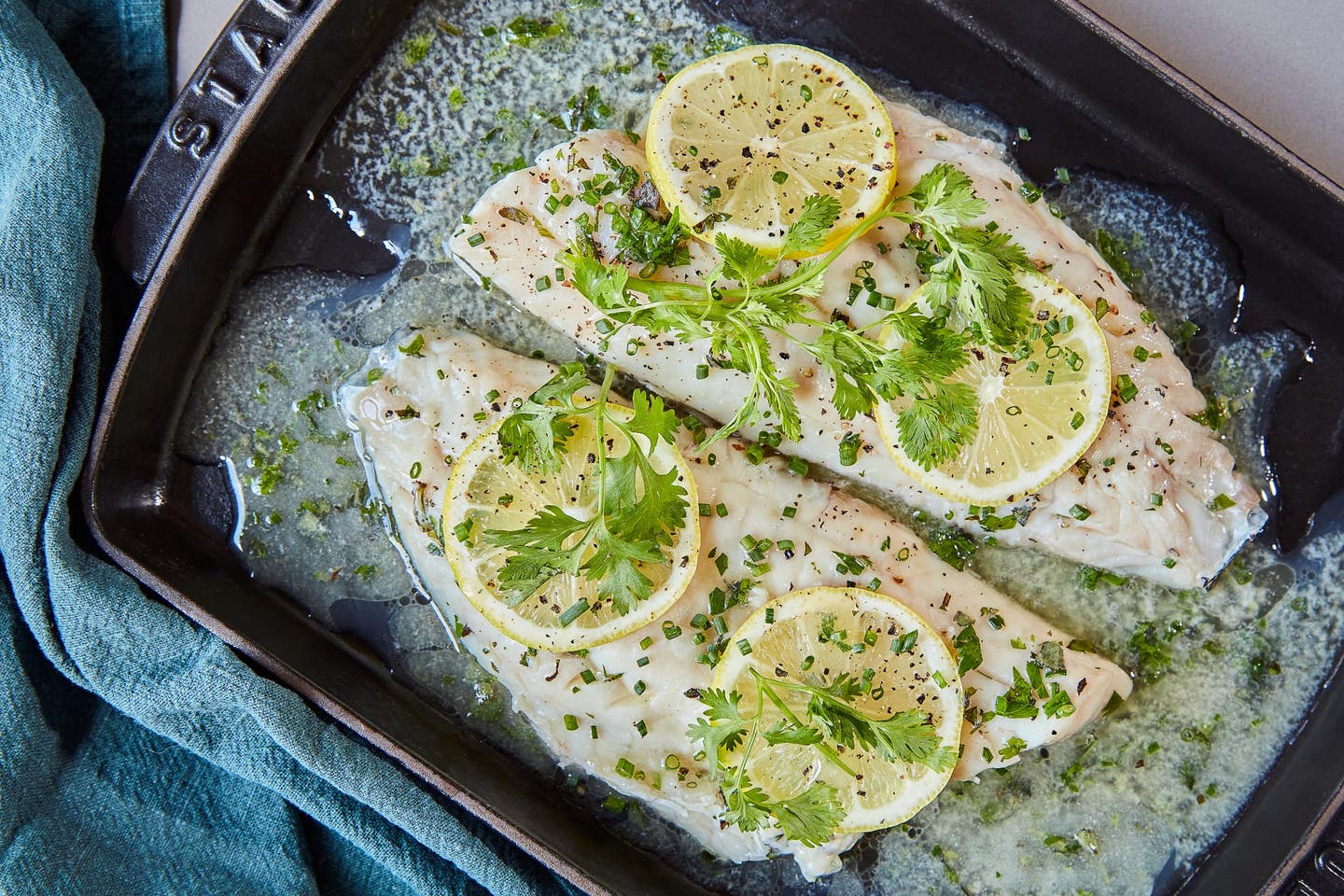
If you poach black cod (sablefish) in brown butter, you probably don't need to add any sauce. If you did albacore in olive oil, you can turn it into a salade Niçoise. Top poached fish with almost any sauce, or make a sauce using your poaching liquid. The classic court-bouillon becomes a veloute when you reduce the liquid by half and whisk it into a light roux.
Final Thoughts
Knowing how to poach fish takes the guesswork out of cooking any type of fish, and the low temperature method makes it hard to screw up. Using a light broth is one of the most healthful cooking methods, while poaching in butter is one of the most flavorful, but either way—or with any other combination of fish and cooking liquid—the same easy process works.
Keep Reading
Continue to Next Story









